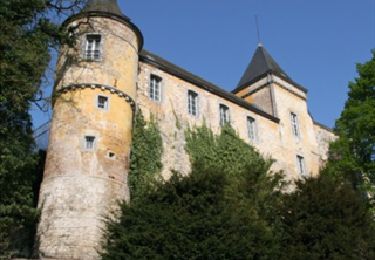

The village of Hour owes its name to its gardens. In the 9th century, Hour was part of Lotharingia and the domain situated between Houille and Lesse was entrusted to the abbey of Stavelot, with the mission to put the territory to good use and evangelise it. The first lords appeared during the 12th century.
Havenne was once a hamlet of the former district of Hour, but the two localities became connected after the construction of a new church halfway between them, around the middle of the 19th century. Under the ‘Ancien Régime’, Grande Hour and Havenne were two very distinct estates. Built on two slopes in a valley through which the Havenne stream flows, the houses are predominantly grouped around the chapel of Saint Laurent.
During your stroll, you will see many half-timbered walls on brick houses dating from the second half of the 19th or the beginning of the 20th century.
Half-timber frames are wooden structures filled with a mixture traditionally made from clay, water or animal urine, and natural fibres (such as straw, hay, or horsehair), but the components can vary from one region–or even village– to another. Some consider wattle and daub to be the first man-made composite in history, as it was already being used around 5,000 BCE!
sport


Cycle


Randonnées de la Maison du Tourisme Famenne - Ardenne Ourthe & Lesse PRO